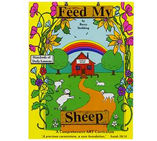This is a combined art text and workbook for teaching drawing, color theory, art appreciation, perspective, portraiture, anatomy, lettering, painting, and more to students ages ten through adult. Older students and adults without art experience should find this a valuable course. It contains more than 250 lessons plus a packet of 17 paint cards. (The cards are 8 1/2” x 11” in size and are a heavy, 110 lb. stock.) For many of the lessons, students need only drawing pencils, a set of colored pencils, a kneaded eraser, a ruler, an extra-fine marker, and a sketchbook. (Most of these items come in the bundle pack.) Later lessons on painting use pure pigment paints and brushes.
Depending upon the age and ability of the student, this can be a three- to four-year curriculum using one lesson per week. One of the primary goals for the course is that students learn to draw realistic images. However, work with other media and skill development, including cartooning, are also taught. You need to select lessons that are appropriate for each student. If you purchase the bundle pack that includes the book plus a set of pure pigment paints, brushes, Prismacolor pencils, drawing pencils, and drawing pen, you will have what you need on hand whenever you choose to work with the various media.
Author Barry Stebbing’s Christian perspective is evident throughout the course in Bible verses, lesson explanations, art appreciation lessons, and even the choices of examples. The book is written to the student so he or she can work independently. However, younger students will probably need some assistance. Instructions are fairly thorough so even parents with little art background should be able to help students through all of the lessons.
Art appreciation is incorporated into many of the lessons, and more focused lessons direct students to the library to locate and copy artists’ works or examples from particular periods. Students also research answers to questions posed about art history, styles, artists, etc.
Overall, this is a very comprehensive course. For parents who wish to maintain academic accountability, there are occasional quizzes on art theory and appreciation with an answer key at the back of the book. This single volume offers a tremendous amount of art instruction. Since students actually work in the book, it is best to purchase one for each student. However, for parents who would rather copy the lessons for multiple children, this is allowed for in-the-home use only.
Parents short on time or who prefer that someone else does the teaching might want to purchase the set of seven Feed My Sheep DVDs on which Stebbing walks through every lesson in the book. In addition to covering all of the instructional information in the book, he sometimes adds extra comments. He also shows examples of student artwork for some of the lessons. The DVDs makes it very easy to understand what is expected in each lesson. Students still need the book since they work directly in the book for all except the painting activities.
How Great Thou ART also publishes two small volumes for ages eight and up that cover some content similar to that in Feed My Sheep. These are called the Lamb’s Book of ART, Book I and Book II. For ages six to ten, check out I Can Do All things: A Beginning Book of Drawing and Painting, and for ages twelve and up, consider the company’s flagship book titled How Great Thou ART.











